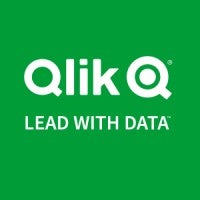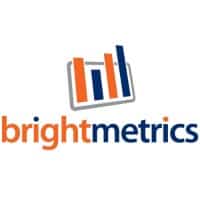Today’s business landscape is data-first, demanding an alignment among various departments such as sales, human resources, marketing to improve business performance. To achieve this, businesses need to make sense of their data across their departments to drive their decision-making. Business intelligence teams use this to help improve overall business performance.
What are BI Tools?
Business intelligence (BI) tools involve a variety of technologies with a goal to unearth and show insights around specific business operations. They help businesses predict future conditions through understanding the complex data of an organization. Though primarily used by analytics professionals and data scientists, some business intelligence tools can carry out self-service as well as automated analysis.
What are the Benefits of Business Intelligence?
Data-driven decision making
Leveraging business intelligence tools to understand all the aspects of a business makes it a data-driven business. The opportunities for a business to actualize its true potential can be seized by using the business’s data to drive every decision it makes.
New actionable insights
In the past, it would have been harder to generate insights from working with siloed teams using dissimilar software. Business intelligence helps businesses generate actionable insights since BI tools combine many data sources to point out correlations between departments. As such, these actionable insights offer businesses an advantage they never previously had.
Tracking performance
Business intelligence helps enterprises track their goals. Through data visualization, enterprises can measure their key performance indicators in real time. Business intelligence tools can then be used to understand why an enterprise is exceeding or failing to meet its KPIs, and swift changes made where necessary to improve performance.
Increased customer satisfaction
Business intelligence assists businesses to understand the behavior of their customers. Real-time consumer feedback can help businesses confidently improve their products and services to satisfy existing customers and attract new ones too.
Also read: Gaining a Competitive Edge Using BI and Data Management
Comparison of Business Intelligence Tools and Software
The top BI tools share a few common features. They all generate reports, plus most of them have self-service features. However, through deeper analysis, here’s how five BI tools compare to each other.
| Tool | Automodeling | Advanced Analytics | Data Modeling | Data Transformation |
| Sisense | ❌ | ✅ | ❌ | ❌ |
| Looker | ✅ | ✅ | ✅ | ✅ |
| Qlik Sense | ✅ | ✅ | ✅ | ✅ |
| MicroStrategy | ✅ | ✅ | ✅ | ✅ |
| Brightmetrics | ❌ | ❌ | ❌ | ❌ |
Sisense

Sisense is an industry-leading AI-driven data and analytics platform that makes customer experience, workflows, and processes smarter, thereby improving data-driven decision making. It simplifies the fusion of data across the enterprise for transformation into easily embedded actionable analytics applications. Through this fusion, Sisense helps enterprises differentiate their products and identify new revenue streams.
Key Differentiators
- Sisense BloX. Sisense BloX offers users a robust library of integrated widgets and add-ons to enable them to create eye-catching visualizations. It also simplifies the creation and customization of actionable application components using prebuilt templates to integrate functionality into dashboards.
- Sisense AI throughout. Sisense leverages artificial intelligence to improve insights from data while reducing the hassle for users across the organization. Users benefit from a richer exploratory environment, thereby shortening the time to generate insights and take action.
- Flexible BI dashboard. The flexibility of the Sisense dashboard allows users to explore data in their preferred approach. Users can enjoy a self-service approach. They can choose between a code-driven experience with languages such as R, SQL, and Python or a drag-and-drop approach to data analysis.
Cons: Sisense may be resource-intensive, resulting in inconsistent performance. Furthermore, there may be a learning curve for new and less technical users.
Looker

Looker is a top business intelligence tool by Google that leverages a web-based data discovery platform for business users and data analysts. Looker provides its users the ability and tools to find answers to their sophisticated questions and ensure better outcomes.
Key Differentiators
- Looker Blocks. Looker offers numerous pre-built analytical templates to ensure users speed up their data modeling processes. These blocks may be in the form of complete data models, optimized SQL patterns, and custom visualizations among others.
- LookML. LookML is Looker’s unique modeling language that provides data teams with a unique approach to data modeling. It allows the creation of unique data experiences to allow users to explore and use data that is of the most relevance to them. The business logic enveloped by LookML and the metrics it defines is reusable.
- Simplified web-based stack. Looker’s simplified web-based stack is in line with the fast analytic databases of today as it provides users with 100 percent in-database architecture to allow them to analyze big data and derive additional value.
Cons: The usage of LookML provides a steep learning curve, making it less approachable compared to alternatives. Additionally, compared to other tools, Looker has limited data preparation capabilities.
Qlik Sense

Qlik Sense is an enterprise analytics platform that offers users the full range of analytics use cases such as guided analytics applications and dashboards, mobile analytics, custom, and embedded analytics, self-service visualization, and reporting. It leverages a multi-cloud architecture to guarantee enterprises flexibility, reliability, and trust.
Key Differentiators
- Qlik Associative Engine. The Qlik Associative Engine provides users with the freedom to explore and combine data without the confines of query-based tools. It also exposes flaws and opportunities to create value in data by allowing the loading of imperfect data without the need to fully cleanse and model the data beforehand.
- Qlik Replicate. Qlik Replicate supports replication between endpoints to allow users to quickly and efficiently load data to warehouses, copy production endpoints, and distribute data across endpoints.
- Search and conversational analytics. Users benefit from Qlik Sense’s interactive search and conversational analytics by being able to interact with and generate insights from data using natural language.
- Self-service visualization. Qlik Sense’s self-service visualization empowers users to effortlessly combine, visualize, load, and explore data, regardless of size. Furthermore, users enjoy faster time-to-insight with the assistance of Insight Advisor for chart recommendations, auto-generated analyses, among others.
Cons: It may come off as too complex for non-technical users. Qlik Sense’s performance may suffer when handling big data.
MicroStrategy

Regardless of the size or maturity of an enterprise, MicroStrategy provides the business intelligence and analytics tools to generate value from data. It allows users to deploy enterprise-grade business intelligence experiences through a wide range of devices, including web, mobile, and desktop. The platform also offers architect and server product components to empower users to architect data models, and support vast approaches to analytics and scaling users respectively.
Key Differentiators
- HyperIntelligence. MicroStrategy’s HyperIntelligence boosts users’ intelligence and speed by embedding suggestions, actions, and analytics into their everyday applications. HyperIntelligence accelerates insights in zero clicks, increasing the productivity of users.
- Predictive analytics and R models. MicroStrategy gives users the ability to integrate with statistical and data-mining products like R and SPSS. Furthermore, MicroStrategy has a vast library of native analytical functions and scoring algorithms.
- Pixel-perfect reports and dashboards. Enterprises have the ability to create personalized dashboards and reports for their workforce and deploy them across various platforms and devices. Enterprises can embed dashboards into custom portals as well as other business applications.
Cons: Initial configuration may be complex and time-consuming. MicroStrategy’s self-service value proposition fails to stand out in comparison to market leaders.
Brightmetrics

Brightmetrics offers users critical insights from their most important consumer communication tools. It assesses the performance of the business phone system of an enterprise as well as contact center applications by highlighting key performance indicators and their impact on customer experience. Brightmetrics gathers and organizes an enterprise’s multi-channel engagement data into the user’s desired configuration.
Key Differentiators
- Core Unified Communications (UC) analytics. Brightmetrics gives users the ability to configure data feeds from many sources, allowing them to deepen their analysis of their phone system data.
- Enterprise Contact Center (ECC) analytics. Enterprise Contact Center analytics empowers users to analyze their contact center metrics to improve end-user experience.
- Scheduled reporting. Brightmetrics’ scheduled reporting feature keeps key stakeholders updated without leaving their inboxes.
- Real-time dashboards. Real-time dashboards provide enterprises the tools to observe and analyze data, and the ability to flexibly meet the needs of customers.
- Historical analytics. Brightmetrics’ historical analytics leverages historical data to assist a user and their customer service team make better data-driven decisions.
Con: Brightmetrics provides a lot of contact center data to analyze, which may lead to analysis paralysis among teams.
Choosing the Best BI Tool
With the following considerations, you should be able to select the most suitable BI tool for you and your team. Do you seek a comprehensive BI tool? Or, would you rather have one that focuses on your particular niche? Which tools fit within your budget? Or does the free version of a tool that piques your interest suffices for you? Would it be of more value to have self-service and automated features?
Comparing the price and features of a tool of interest with similar tools is advisable. Above all, BI tools are only as good as the data they work with. To get the most out of any BI tool, the data you use has to be of the utmost quality.
Read next: Choosing the Right Storage to Provision DevOps
https://www.enterprisestorageforum.com/management/business-intelligence-bi-tools/

